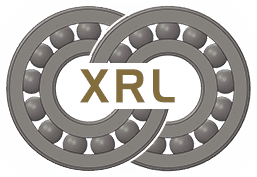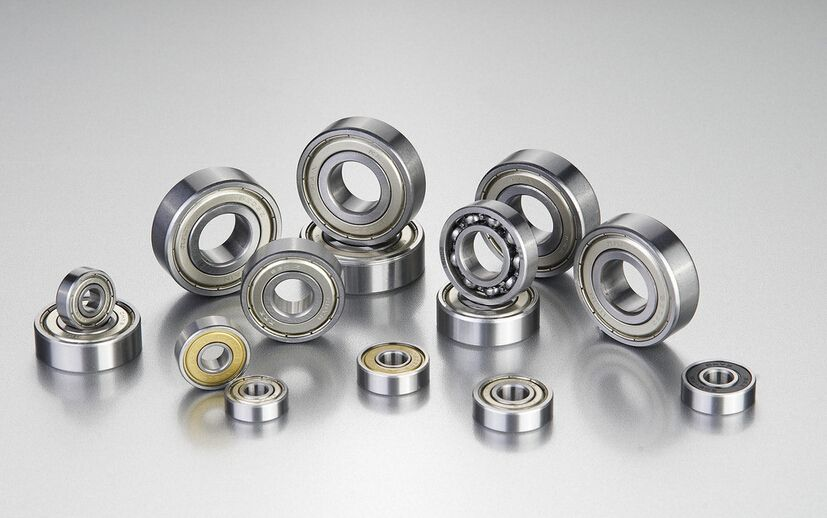Rolling bearing is an important mechanical component. Whether the performance of a motor can be fully exerted depends on whether the bearing is properly lubricated. It can be said that lubrication is a necessary condition to ensure the normal operation of the bearing. It is important for improving the bearing capacity and use of the bearing. Lifespan plays an important role. Motor bearing models are generally lubricated with grease, but they are also lubricated with oil. 1 Lubrication purpose The purpose of bearing lubrication is to form a thin oil film between the rolling element surface or sliding surface to prevent direct metal contact. Lubrication reduces the friction between metals and slows down their wear; the formation of an oil film increases the contact area and reduces the contact stress; ensures that the rolling bearing can operate normally for a long time under high-frequency contact stress and prolongs the fatigue life; eliminates frictional heat and reduces The temperature of the working surface of the bearing can prevent burns; it can prevent dust, rust and corrosion. Oil lubrication is suitable for high-speed bearings and can withstand a certain degree of high temperature, and also plays a role in reducing bearing vibration and noise.
Oil lubrication is roughly divided into: 3.3 Splash lubrication Splash lubrication is a common lubrication method for rolling bearings in closed gear transmissions. It uses rotating parts, such as gears and oil throwers, to splash lubricating oil. Scatter on the bearing or flow into the pre-designed oil groove along the box wall into the rolling bearing to lubricate the rolling bearing, and the used lubricating oil can be collected in the box and recycled for reuse. Because rolling bearings do not require any auxiliary facilities when splash lubrication is used, they are often used in simple and compact gear transmissions. However, the following three points should be paid attention to when using splash lubrication: 1) The lubricating oil level should not be too high, otherwise the churning oil consumption will be too large, and the oil will be drained. The orifice drips oil to the bearing to lubricate the bearing. The amount of oil used at the root of the orifice can be adjusted. The advantage of this lubrication method is: simple structure, easy to use; the disadvantage is: the viscosity is not easy to be too high, otherwise the oil dripping will not be smooth, which will affect the lubrication effect. Therefore, it is generally used for the lubrication of rolling bearings with low speed and light load.
Oil bath lubrication is also called oil-immersion lubrication, which is to immerse the bearing part in the lubricating oil, so that each rolling element of the bearing can enter the lubricating oil once during operation, and bring the lubricating oil to other working parts of the bearing. Considering the stirring loss and temperature rise, in order to slow down the aging speed of lubricating oil, it is difficult to use oil bath lubrication in high-speed bearings. The sediment in the pool, such as abrasive debris, is brought into the bearing part, causing abrasive wear. 2) The lubricating oil in the box should always be kept clean, and the magnetic adsorber can be used in the oil pool to remove abrasive debris and foreign matter in time to reduce the occurrence of abrasive wear. 3) In the structural design, an oil storage tank and an orifice leading to the bearing can be set on the tank wall, so that the bearing can be lubricated in an oil bath or dripping oil, and the lubrication can be replenished to prevent insufficient oil supply. Oil circulation lubrication Oil circulation lubrication is a method of actively lubricating rolling bearing parts. It uses the oil pump to suck the lubricating oil out of the oil tank, introduce it into the rolling bearing seat through the oil pipe and oil hole, and then return the oil to the oil tank through the oil return port of the bearing seat, and then use it after cooling and filtering. Therefore, this kind of lubrication method can effectively discharge friction heat while removing more heat, so it is suitable for bearing supports with large load and high speed.
Oil injection lubrication is a type of oil circulation lubrication. However, in order to allow lubricating oil to fully enter the internal relative motion surface of the high-speed bearing, and at the same time avoid excessive temperature rise and excessive frictional resistance due to excessive circulating oil supply under high-speed operating conditions, the oil is injected into the bearing seat. The nozzle is added to the port, and the oil supply pressure is increased, and the oil is sprayed onto the bearing by the nozzle to achieve the lubrication and cooling of the bearing. Therefore, oil injection lubrication is a good lubrication method, mainly used for high-speed rolling bearings, and can be used in occasions where the dmn value of the rolling bearing is greater than 2000000mm·r/min. The pressure of the oil pump for oil injection lubrication is generally about 3 to 5 bar. In order to overcome and avoid the Coanda effect under high speed conditions, the oil injection speed at the nozzle outlet must reach more than 20% of the linear speed of the rolling bearing.
Oil mist lubrication is a kind of minimal quantity lubrication, which uses a small amount of lubricating oil to meet the lubrication requirements of rolling bearings. Oil mist lubrication is to turn lubricating oil into oil mist in the oil mist generator, and lubricate the bearing through the oil mist. Since the oil mist condenses into oil droplets on the working surface of the rolling bearing, in fact the rolling bearing still maintains a state of thin oil lubrication. When the linear velocity of the rolling element of the bearing is very high, oil mist lubrication is often used to avoid the increase of the internal friction of the oil and the increase of the working temperature of the rolling bearing due to excessive oil supply in other lubrication methods. Generally, the oil mist pressure is about 0.05-0.1bar. However, the following two points should be paid attention to when using this lubrication method: 1) The viscosity of the oil should generally not be higher than 340mm2/s (40°C), because the atomization effect will not be achieved if the viscosity is too high. 2) The lubricated oil mist may partly dissipate with the air and pollute the environment. If necessary, use an oil and gas separator to collect oil mist, or use a ventilation device to remove exhaust gas.
Oil-air lubrication adopts a piston-type quantitative distributor, which sends a small amount of oil to the compressed air flow in the pipe at regular intervals, forming a continuous oil flow on the pipe wall and supplying it to the bearing. Since new lubricating oil is often fed in, the oil will not age. Compressed air makes it difficult for external impurities to invade the interior of the bearing. The small amount of oil supply reduces the pollution to the surrounding environment. Compared with oil mist lubrication, the amount of oil in oil-air lubrication is less and more stable, the friction torque is small, and the temperature rise is low. It is especially suitable for high-speed bearings.
Post time: Dec-05-2022

